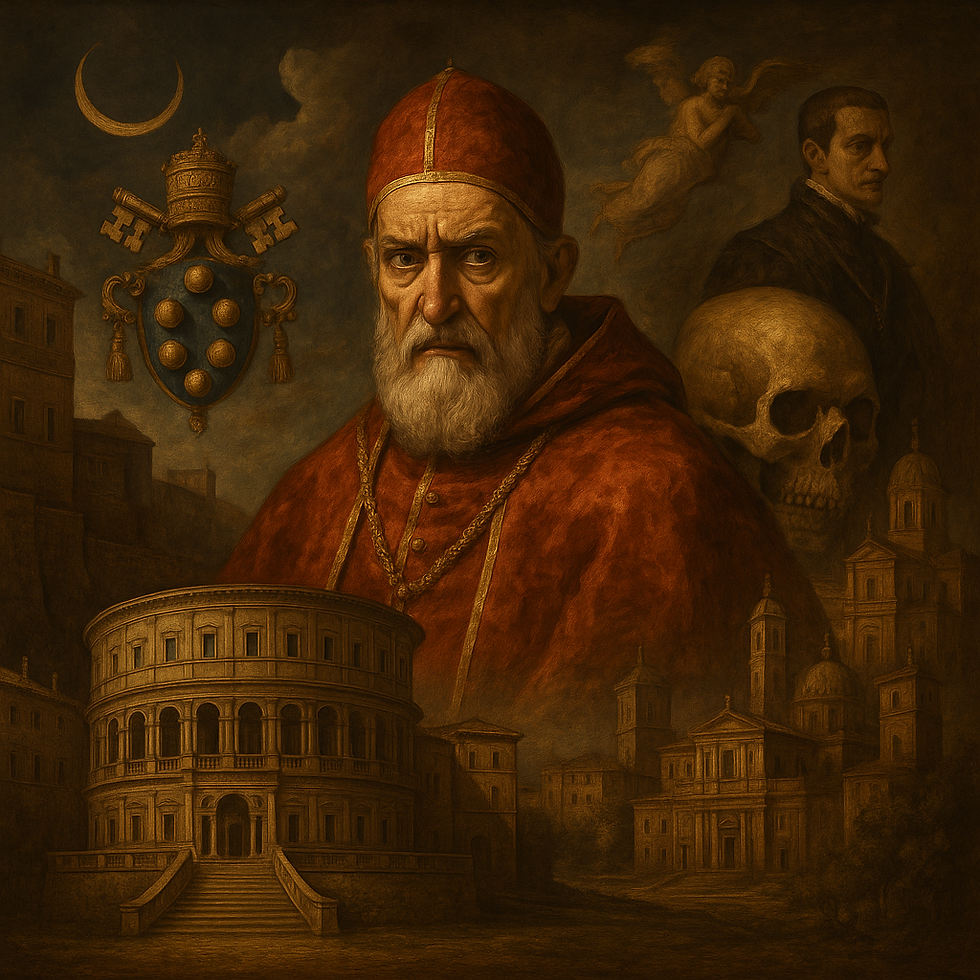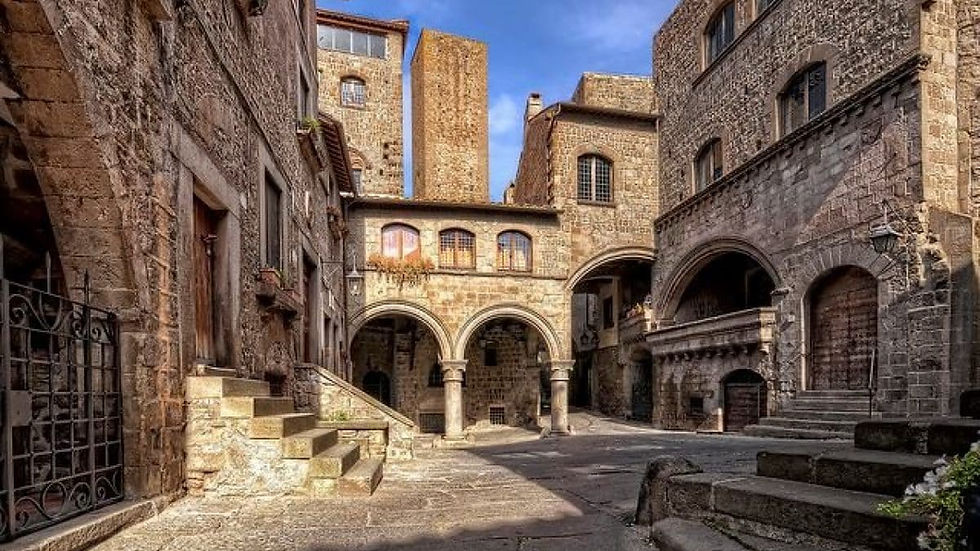⚔️ The Lost Duchy of Castro and the Tragedy of 1649
- Giano di Vico

- Jun 23
- 3 min read
A chronicle of a foretold massacre — papal revenge, noble ambition, and a memory erased
Once upon a time, there was a small capital. A powerful city, refined, rich in art and intrigue.Its name was Castro, and today, only a shadow remains—swallowed by the fields that stretch between Tuscia and the borderlands of modern-day Maremma.
But Castro was more than a city. It was the beating heart of a dynastic dream: the Duchy of Castro, the Farnese stronghold, the symbol of their glory… and of their downfall.
🏰 A duchy born of ambition
The Duchy of Castro was established in 1537 by Pope Paul III Farnese, the very pontiff who raised his nephews to dukes and cardinals with the ease of an emperor. Castro, once a fortified medieval village, was reborn as a Renaissance capital, envisioned by Antonio da Sangallo the Younger: elegant palaces, geometric streets, a modern cathedral.
The vision was clear: to make Castro the "Parma of Lazio", a model Farnese state, politically and culturally autonomous—yet firmly in the family’s grip.
⚖️ Popes and dukes: a fire smoldering beneath the ashes
But the Papacy never forgets. After Paul III, his successors saw the semi-independent duchy nestled in papal lands with growing suspicion.Over time, tensions rose between the Farnese and the Roman Curia—over unpaid taxes, questionable alliances, and mutual provocations.
In 1639, the Duke of Castro was accused of involvement in the assassination of the city’s bishop. The fuse was lit.Pope Urban VIII (Barberini) responded with fury, invading the duchy—but after long years of negotiation and foreign pressure, he was forced to withdraw.
The revenge, however, was only postponed.
💣 The cursed year: 1649
In 1649, under Pope Innocent X Pamphilj, everything collapsed.This time, there was no diplomacy. The Papal army marched on Castro, again accusing the Farnese of conspiring against the Church.
On September 2nd, 1649, Castro was wiped off the map.
It wasn’t a battle—it was a systematic destruction, cold, methodical, deliberate. Palaces, churches, archives, towers: everything was razed. The very stones were hauled away. The city was not just physically erased—it was historically obliterated. Innocent X forbade its rebuilding:“Nothing shall ever be built here again,” reads the Latin inscription still standing on the site.
🩸 A wound still open
The destruction of Castro was not merely a military act—it was a symbolic and political purge without precedent.A papal vendetta dressed as justice, a warning to every noble family daring to defy Rome.
The Duchy of Castro was formally dissolved.The Farnese never recovered. Their prestige was broken, their lands scattered, their vision of an independent state gone like dust in the wind.
Today, Castro no longer exists.Only ruins, silence… and a few cypresses that still remember.
👁️ The ghost of Castro
But stones remember.And those who wander the woods between Ischia di Castro and the Fiora Valley swear they still hear distant echoes:the clatter of hooves, the ghost of a church organ swept by wind, a scream that rustles through the olive groves.
Modern archaeologists are slowly bringing back what once was hidden: the street plan, the cathedral’s remains, the broken walls, the ancient foundations.But the sorrow lingers—like an echo that refuses to fade.
🕯️ Why remember Castro today
Because Castro still speaks to us:of power and fragility,of beauty and vengeance,of how memory can be buried… but never truly erased.
And perhaps, to remember Castro is to heal an old injustice, to restore a voice to a city that once was—and that never deserved to vanish without a trace.




Comments